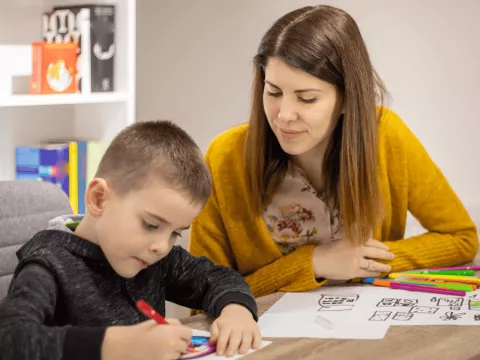- AdventHealth

Choose the health content that’s right for you, and get it delivered right in your inbox.
Aches. Pains. Twinges. If you’ve been working out, it’s common to feel achiness afterward. But how do you know if your soreness after exercise is normal — or if you have an injury that needs attention from a health care provider or physical therapist?
Muscle Soreness After Exercise
If you have sore muscles after exercise, it’s not necessarily an alarm bell. When you work your muscles hard, they naturally react by developing tiny tears. This is a part of your muscle mass changing and growing stronger. The gym slang, “getting ripped," might be accurate in this sense.
The feeling of soreness after exercise comes on slowly. Most people feel it peaking a day or two after a workout, and then it disappears. Soreness can feel achy or come with a burning feeling. The muscles you use might feel tight, tender and weak. It can feel uncomfortable to exercise again.
Intense gym sessions or trying a new activity for a long period can cause a form of delayed soreness called DOMS, or delayed onset muscle soreness. This type of soreness is more serious and can take some time to recover. That's also why experts recommend slowly easing into new forms of exercise.
Lingering Pain After Exercise
Muscle pain after exercise, however, is a bit different. Pain isn’t a normal response to exercise — it’s your body’s way of telling you something is wrong. And it can be important to pay attention when it happens.
Pain usually comes on suddenly right after a particular movement or a little slip you took in the wrong direction. It can also start slightly later. It can feel sharp or severe or make it hard to get through your daily activities.
However, unlike soreness, it doesn’t seem to go away. If you’re still hurting 3 to 5 days after your workout, the lingering pain might mean you've injured yourself and damaged some tissue or a joint.
How to Help Sore Muscles
If you find yourself with sore muscles after exercise, you can help them by taking it a little easier and ensuring you're properly hydrated and eating well. You may also want to try ice on an area that's sore (for no more than 20 minutes at a time) to help reduce pain and swelling. In a few days, you should be feeling better.
However, if you've injured yourself, healing may take longer. See a health care provider if you feel:
- New popping or clicking in a joint
- Pain that lasts longer than five days or gets worse
- Instability in your arm, leg or joint
If you have persistent pain or regularly injure yourself, a physical therapist might be able to help. They'll work with you to determine what's happening in your body and help you develop a plan to strengthen your muscles and joints. The goal is to help you stay active and pain-free.
When You Need Help for What Hurts
Regular exercise is an important part of a healthy lifestyle, but you also want to stay in tune with what your body tells you. Sometimes, asking an expert your questions and hearing their advice can put you back on track.
At AdventHealth, we’re always here to help you manage pain and provide the most advanced orthopedic treatments when you need them. If you have questions, you can learn more about orthopedic care on our website or schedule an appointment with one of our providers.


